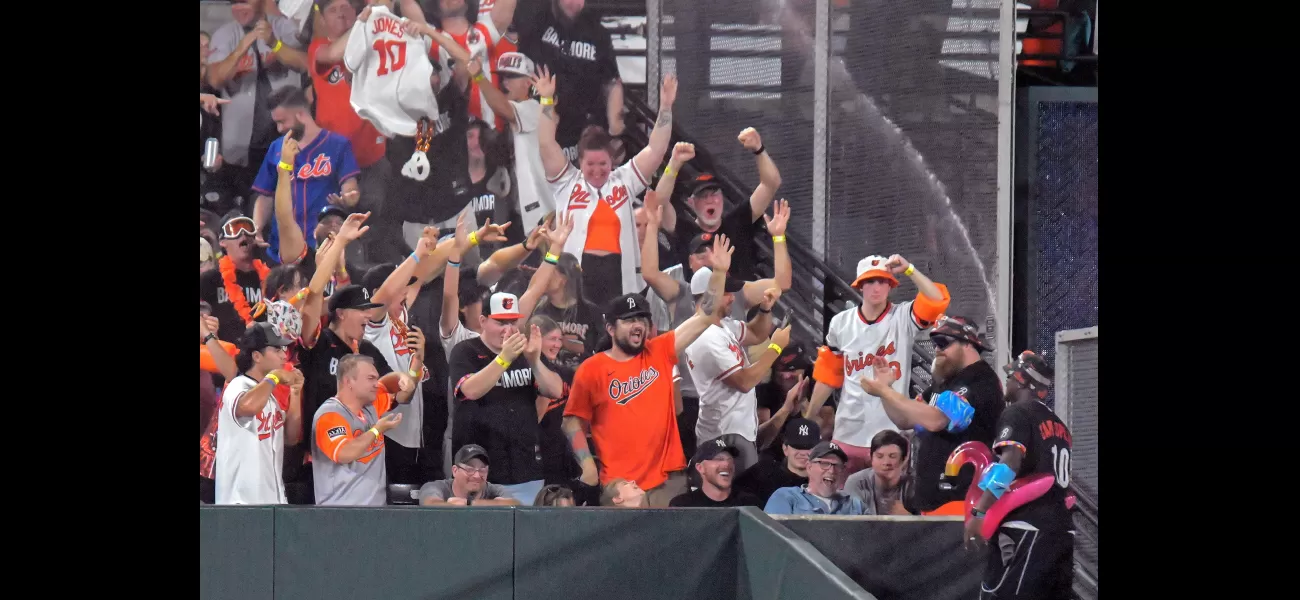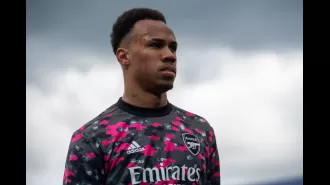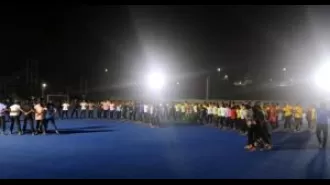Baltimore may manage workloads by demoting Tyler Wells, just one part of a larger change.
Tyler Wells' demotion was a surprise 3 weeks ago. Orioles manager Brandon Hyde explained it as a way to help Wells re-find consistency & be integral to success in the 1st half. Same could be true for others on the team.
July 31st 2023.

Tyler Wells’ demotion would’ve been unfathomable three weeks ago. Sunday, it was barely a surprise.
Wells, the Orioles’ best starting pitcher in the season’s first half, was optioned to Double-A after his third straight poor start Saturday. Since the All-Star break, the 6-foot-8 right-hander has been almost unrecognizable to the reliable starting pitcher who was leading the majors in WHIP.
The increasing workload for Wells, who pitched just 163 total frames from 2019 to 2022, has been a question facing the club since he solidified his spot in the rotation and quickly approached his single-season innings high. The Orioles gave their answer Sunday, with manager Brandon Hyde explaining the demotion as a way to give Wells a “breather,” manage his workload and get him back to the consistent starter who was integral to Baltimore’s success in the first half.
There’s not much argument over the validity of the Orioles’ decision to option Wells, who suddenly lost his command during his past three starts to issue nine walks and 11 runs in just nine innings. But the same bill that came due for Wells could also for Dean Kremer and Grayson Rodriguez, two other young members of the rotation who have either surpassed their single-season innings marks or are about to.
How Baltimore handles those trains barreling down the tracks might determine whether it can maintain its standing as the American League’s best team — on pace to win 98 games — or contend for a World Series.
“When you have starters that are doing things that they’ve never done before, you’re obviously paying closer attention,” Hyde said.
Orioles executive vice president and general manager Mike Elias said Friday before Wells’ start that the organization is monitoring the workloads of its starting pitchers and will be “mindful of indicators” that could provide a “reason to pull back.”
“There’s really not a ton of science, or any science, there,” Elias said about innings limits. “We try to use common sense. We try to use our expertise. I don’t know that a single member of our rotation right now wants to go leave the rotation in some way shape or form. There’s that, too. They’re having the season of their lives, they’re competing, the team’s in first, they’ve got their whole careers ahead of them.”
Kremer, who was pulled with no outs in the fifth in Sunday’s win over the New York Yankees, is 14 2/3 innings away from matching his single-season high set last year. The 27-year-old right-hander leads the team with 10 wins, but he’s allowed four or more runs in eight of his 22 starts and owns a 4.66 ERA.
Rodriguez, meanwhile, has already surpassed his high-water mark of 103 frames from 2021 with 103 2/3 — nearly two-thirds of which in the majors. The 23-year-old spent six weeks in Triple-A after struggling in his first 10 starts, but he’s been sharp since returning to the rotation to begin the second half.
For Kremer, Rodriguez and, to a lesser extent, Kyle Bradish , Hyde said they’ll be evaluated on a “case-by-case” basis. He’s also said in the past that evaluating the stress level of innings and pitches can be just as important as the total number of innings.
“It’s challenging,” Hyde said about managing workloads. “I’m so proud of all these guys. Tyler, he’s in uncharted waters right now. He’s not had experience of pitching like a normal starter in a full season since the minor leagues years ago. And all these guys are going to go through things for the first time, honestly, and that’s part of development and it’s part why they’re going to be really good down the road, too.
“We’re trying to win right now, and we’re going to try to win down the road and these guys have [taken] huge steps in their career this year. So we’re going to monitor things and we’ll see what happens, but we need all of them to go where we want to go.”
The workload conundrum doesn’t just apply to the rotation; it’s perhaps just as perilous for the Orioles’ two best relievers. Closer Félix Bautista and setup man Yennier Cano are both on pace to throw more innings than they did last season as Hyde has often tasked the two right-handers to finish games. Bautista has pitched in 43.8% of the Orioles’ games this season, while Cano, who was called up in mid-April, has appeared in 50.5% of contests for which he was on the roster.
Bautista, in his first full season as a closer, is at 50 innings and on pace for roughly 77 — more than the 65 2/3 he totaled last year. Cano, a rookie, is on pace for 84 innings — more than the 58 1/3 he covered last year and barely short of the 86 2/3 he managed in Cuba nearly a decade ago.
Unlike Wells and the starting pitchers, every pitch and inning Bautista and Cano throw are stressful. But similar to the starters, they could all be asked to pitch well into October.
“Bautista’s never closed for a full season before. Look at Cano’s last year, he’s never pitched in anything close to these sort of situations he’s being put in before,” Hyde said. “So all these guys are going to be better in the upcoming years for going through this year we’ve had up to this point, and hopefully we continue to keep it going. I’m incredibly impressed with how everybody’s handled it so far.”
It’s possible Wells returns to the rotation in August or September, although Hyde didn’t rule out using him in a relief role down the stretch. But at least for the short term, his demotion opens a spot in the rotation. The Orioles seemingly have two options: Move left-hander Cole Irvin back into the rotation or trade for a starting pitcher.Tyler Wells' demotion would have been unfathomable three weeks ago, but Sunday, it was barely a surprise. After three consecutive poor starts, it was time for the Orioles to make the tough call and option Wells down to Double-A.
The 6-foot-8 right-hander had been almost unrecognizable to the reliable starter he had been in the first half of the season, leading the majors in WHIP. His increasing workload was a question mark since he solidified his spot in the rotation and quickly approached his single-season innings high.
The Orioles' decision to option Wells is understandable. He had suddenly lost his command and was issuing nine walks and 11 runs in just nine innings. The same bill that came due for Wells could also be due for Dean Kremer and Grayson Rodriguez, two other young members of the rotation. How Baltimore handles the situation could determine whether they maintain their standing as the AL's best team, or contend for a World Series.
Mike Elias, the Orioles' executive vice president and general manager, said the organization was monitoring the workloads of its starters and would be mindful of indicators that could provide a reason to pull back. He added that there is no exact science for setting innings limits - that they are using common sense and expertise.
Kremer is 14 2/3 innings away from matching his single-season high set last year, and Rodriguez has already surpassed his high-water mark of 103 frames from 2021. According to Brandon Hyde, Baltimore's manager, the starters will be evaluated on a case-by-case basis. He also said evaluating the stress level of innings and pitches can be just as important as the total number of innings.
The workload conundrum doesn’t just apply to the rotation - it’s perhaps just as perilous for the Orioles’ two best relievers, Félix Bautista and Yennier Cano. Bautista is in his first full season as a closer and is on pace for roughly 77 innings - more than the 65 2/3 he totaled last year. Cano, a rookie, is on pace for 84 innings - more than the 58 1/3 he covered last year.
It’s possible Wells returns to the rotation in August or September, although Hyde didn’t rule out using him in a relief role down the stretch. His demotion opens a spot in the rotation and the Orioles seemingly have two options - move left-hander Cole Irvin back into the rotation or trade for a starting pitcher. Whatever they decide, they'll need to take the workloads of their players into account if they hope to maintain their standing as the AL's best team.
Wells, the Orioles’ best starting pitcher in the season’s first half, was optioned to Double-A after his third straight poor start Saturday. Since the All-Star break, the 6-foot-8 right-hander has been almost unrecognizable to the reliable starting pitcher who was leading the majors in WHIP.
The increasing workload for Wells, who pitched just 163 total frames from 2019 to 2022, has been a question facing the club since he solidified his spot in the rotation and quickly approached his single-season innings high. The Orioles gave their answer Sunday, with manager Brandon Hyde explaining the demotion as a way to give Wells a “breather,” manage his workload and get him back to the consistent starter who was integral to Baltimore’s success in the first half.
There’s not much argument over the validity of the Orioles’ decision to option Wells, who suddenly lost his command during his past three starts to issue nine walks and 11 runs in just nine innings. But the same bill that came due for Wells could also for Dean Kremer and Grayson Rodriguez, two other young members of the rotation who have either surpassed their single-season innings marks or are about to.
How Baltimore handles those trains barreling down the tracks might determine whether it can maintain its standing as the American League’s best team — on pace to win 98 games — or contend for a World Series.
“When you have starters that are doing things that they’ve never done before, you’re obviously paying closer attention,” Hyde said.
Orioles executive vice president and general manager Mike Elias said Friday before Wells’ start that the organization is monitoring the workloads of its starting pitchers and will be “mindful of indicators” that could provide a “reason to pull back.”
“There’s really not a ton of science, or any science, there,” Elias said about innings limits. “We try to use common sense. We try to use our expertise. I don’t know that a single member of our rotation right now wants to go leave the rotation in some way shape or form. There’s that, too. They’re having the season of their lives, they’re competing, the team’s in first, they’ve got their whole careers ahead of them.”
Kremer, who was pulled with no outs in the fifth in Sunday’s win over the New York Yankees, is 14 2/3 innings away from matching his single-season high set last year. The 27-year-old right-hander leads the team with 10 wins, but he’s allowed four or more runs in eight of his 22 starts and owns a 4.66 ERA.
Rodriguez, meanwhile, has already surpassed his high-water mark of 103 frames from 2021 with 103 2/3 — nearly two-thirds of which in the majors. The 23-year-old spent six weeks in Triple-A after struggling in his first 10 starts, but he’s been sharp since returning to the rotation to begin the second half.
For Kremer, Rodriguez and, to a lesser extent, Kyle Bradish , Hyde said they’ll be evaluated on a “case-by-case” basis. He’s also said in the past that evaluating the stress level of innings and pitches can be just as important as the total number of innings.
“It’s challenging,” Hyde said about managing workloads. “I’m so proud of all these guys. Tyler, he’s in uncharted waters right now. He’s not had experience of pitching like a normal starter in a full season since the minor leagues years ago. And all these guys are going to go through things for the first time, honestly, and that’s part of development and it’s part why they’re going to be really good down the road, too.
“We’re trying to win right now, and we’re going to try to win down the road and these guys have [taken] huge steps in their career this year. So we’re going to monitor things and we’ll see what happens, but we need all of them to go where we want to go.”
The workload conundrum doesn’t just apply to the rotation; it’s perhaps just as perilous for the Orioles’ two best relievers. Closer Félix Bautista and setup man Yennier Cano are both on pace to throw more innings than they did last season as Hyde has often tasked the two right-handers to finish games. Bautista has pitched in 43.8% of the Orioles’ games this season, while Cano, who was called up in mid-April, has appeared in 50.5% of contests for which he was on the roster.
Bautista, in his first full season as a closer, is at 50 innings and on pace for roughly 77 — more than the 65 2/3 he totaled last year. Cano, a rookie, is on pace for 84 innings — more than the 58 1/3 he covered last year and barely short of the 86 2/3 he managed in Cuba nearly a decade ago.
Unlike Wells and the starting pitchers, every pitch and inning Bautista and Cano throw are stressful. But similar to the starters, they could all be asked to pitch well into October.
“Bautista’s never closed for a full season before. Look at Cano’s last year, he’s never pitched in anything close to these sort of situations he’s being put in before,” Hyde said. “So all these guys are going to be better in the upcoming years for going through this year we’ve had up to this point, and hopefully we continue to keep it going. I’m incredibly impressed with how everybody’s handled it so far.”
It’s possible Wells returns to the rotation in August or September, although Hyde didn’t rule out using him in a relief role down the stretch. But at least for the short term, his demotion opens a spot in the rotation. The Orioles seemingly have two options: Move left-hander Cole Irvin back into the rotation or trade for a starting pitcher.Tyler Wells' demotion would have been unfathomable three weeks ago, but Sunday, it was barely a surprise. After three consecutive poor starts, it was time for the Orioles to make the tough call and option Wells down to Double-A.
The 6-foot-8 right-hander had been almost unrecognizable to the reliable starter he had been in the first half of the season, leading the majors in WHIP. His increasing workload was a question mark since he solidified his spot in the rotation and quickly approached his single-season innings high.
The Orioles' decision to option Wells is understandable. He had suddenly lost his command and was issuing nine walks and 11 runs in just nine innings. The same bill that came due for Wells could also be due for Dean Kremer and Grayson Rodriguez, two other young members of the rotation. How Baltimore handles the situation could determine whether they maintain their standing as the AL's best team, or contend for a World Series.
Mike Elias, the Orioles' executive vice president and general manager, said the organization was monitoring the workloads of its starters and would be mindful of indicators that could provide a reason to pull back. He added that there is no exact science for setting innings limits - that they are using common sense and expertise.
Kremer is 14 2/3 innings away from matching his single-season high set last year, and Rodriguez has already surpassed his high-water mark of 103 frames from 2021. According to Brandon Hyde, Baltimore's manager, the starters will be evaluated on a case-by-case basis. He also said evaluating the stress level of innings and pitches can be just as important as the total number of innings.
The workload conundrum doesn’t just apply to the rotation - it’s perhaps just as perilous for the Orioles’ two best relievers, Félix Bautista and Yennier Cano. Bautista is in his first full season as a closer and is on pace for roughly 77 innings - more than the 65 2/3 he totaled last year. Cano, a rookie, is on pace for 84 innings - more than the 58 1/3 he covered last year.
It’s possible Wells returns to the rotation in August or September, although Hyde didn’t rule out using him in a relief role down the stretch. His demotion opens a spot in the rotation and the Orioles seemingly have two options - move left-hander Cole Irvin back into the rotation or trade for a starting pitcher. Whatever they decide, they'll need to take the workloads of their players into account if they hope to maintain their standing as the AL's best team.
[This article has been trending online recently and has been generated with AI. Your feed is customized.]
[Generative AI is experimental.]
0
0
Submit Comment





